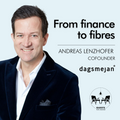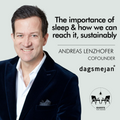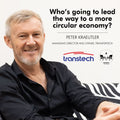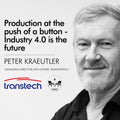Circularity - the conscious way for corporates

Circularity - the conscious way for corporates
GUESTS FOR CHANGE with Asheen Phansey
PART 1
Within the Guests for Change series, thought leaders, pioneers, visionaries, and game-changers share their insights into the world of sustainability and circularity. Having featured THE GUESTLIST’s Cashmere Spa with CEO, Anton Schumann, as part of Eleven Radius (previously Circular Fashion Pledge), Asheen Phansey is a familiar face to our audience.
For over a decade, Asheen has served as a sustainability leader and lecturer in the private sector and higher academic institutions. His expertise lies in nature-inspired biomimicry design, product lifestyle stewardship, closed-loop business models, and green marketing. Sought out by multiple companies to consult on their sustainability strategies and reporting, Asheen has also served on the boards of various environmental organizations. Holding a bachelor's degree in chemical engineering from Cornell University and an MBA - Asheen brings an unparalleled depth of insight, focus and drive to all he does. His latest endeavor, Eleven Radius, sees circular models implemented with industry peers.
With his background in the corporate sustainability space, Asheen has been part of the growing evolution of standards within commerce and industries. Speaking into these factors, he shares how circularity is shifting the corporate consciousness.

Photo by Alvaro Reyes on Unsplash
Although commonplace now, in the past, it was unusual for businesses to be sustainable and growing as a business at the same time.
One of the most important factors, he mentions, is that in the last two decades, we have seen businesses start to “invite in” civil society members as roleplayers within industries. This has signalled the integration of what is done within businesses - for their own employees, along with the protocols within the processes and procedures that they follow. “Environmental health and safety really evolved to what we may call corporate sustainability,” he notes. This is something that has extended to supply chains and to their greater communities.
“Within the business side, we’ve seen an evolution of corporate giving/philanthropy to corporate social responsibility.”
“Within the business side, we’ve seen an evolution of corporate giving/philanthropy to corporate social responsibility,” he says. Instead of businesses merely doing some sort of financial “giving” for tax abatement, a more conscious state becomes part of what their business model is about and their contribution to the world. This can even go on to form an overlap between both social movements and corporations - each has something to say, and has power to leverage over those issues. As this connects and integrates with an approach of justice, equity, diversity and inclusion it becomes more and more apparent that such innovations stretch beyond what was initially thought possible.

Image via Getty Images
“Apart from the core product and how exactly the business makes its money, businesses are happy to be transparent. And while that’s a huge improvement, it’s not enough. There is an inner wall now, around “how we make money,”” shares Asheen. As those inner walls start to break down and the sense of responsibility in the world spills into looking at how exactly we are making money, we are starting to look at the core product and what it does to the environment, and in the hands of our consumers. “This is what is really seen as “circular economy,”” he says.
“Circular economy is something greater than sustainability, but it includes sustainability, and corporate social responsibility. But the thing that those others don’t include that circular economy has to touch is the core of how we bring value to the world - and what that does, and how that interacts with the rest of the world,” says Asheen.
As humans, we need to be taking more and more into consideration.
Are we selling something and taking it back? Are we renting it? Are we designing it for a second life? Or even for a third life? Are we taking a cradle-to-grave or cradle-to-cradle philosophy? More and more we are thinking about how we make money impacts the rest of the world. What used to be at the core of this approach was the assumption that people should buy more stuff.

Image by Alvaro Reyes on Unsplash
But, this is something that a circular economy allows us to probe into. It allows us to take a step back and start questioning. What about consumption? How are we considering the people who give us money? Are we fully considering those who are buying our products? Are we seeing them as mere consumers? What values does this imbue? What message does this communicate? Are we concerned about what they do with our products after they have made use of them? Asheen notes that today more and more startups are now saying “You know this linear model? Let’s break it, let’s create something amazing!” This is a shift that is being seen from sustainability toward a more circular economy that is really exciting.
“Sustainability, as it’s currently used, is about doing less bad. Circularity is about redesigning your business so that it is a force for good. And there’s a big difference between that and merely doing less bad - which is a great first step by the way!” he shares.
“Sustainability, as it’s currently used, is about doing less bad. Circularity is about redesigning your business so that it is a force for good.”
But, circularity is different. Circularity is about probing, it involves investigation. It looks at how we can redesign business. It looks at what our reason is for the existence of the business from the ground up, so as to be a positive contribution to the social and environmental fabric of the world.
“That’s a radical shift in how we think about the way that we interact with our suppliers, with our customers, with the people that are working in our factories, with everyone that we touch - with even just the general public and how we educate the general public on what we do - and with the very message and face of our brand. It’s really different,” shares Asheen.
And this approach is being rewarded - especially by the younger generations, he observes. “They are saying, “You know what, I want to identify with this brand, because they identify with my values, because they match my values.” And that’s something that’s different from simply doing more sustainable practices.”
While the journey toward becoming more circular and sustainable is by no means linear or clearly defined, it is important to know that together, such change is not only possible - it is indeed already underway.








Leave a comment